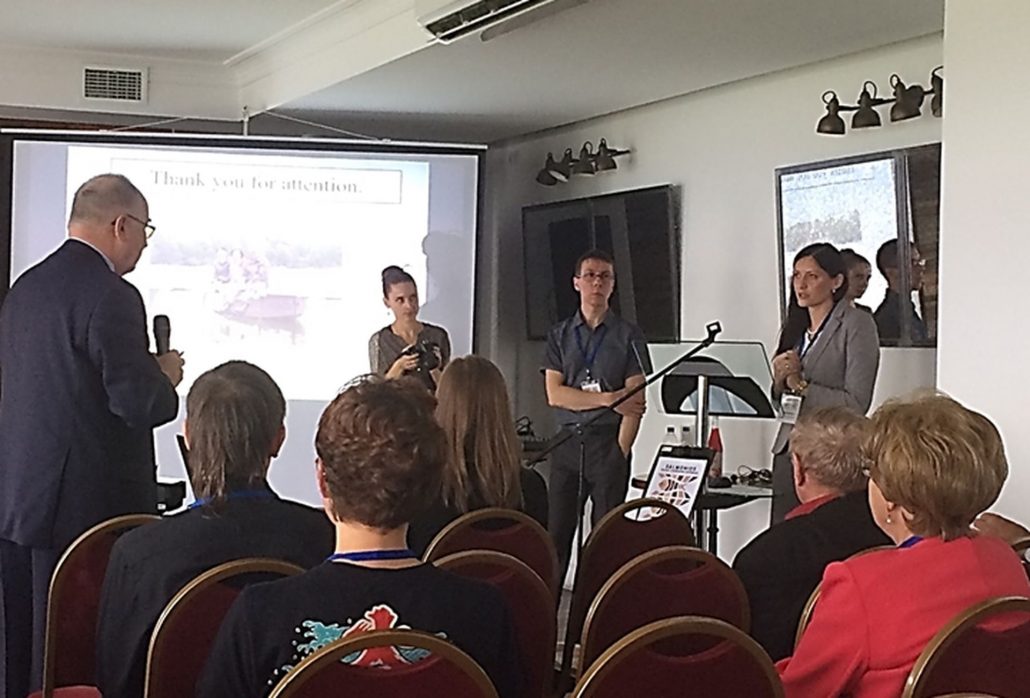Participants of International Conference Appreciated Experience of Mezen Salmon Spawning Grounds Monitoring
The international conference “Salmonids: Biology, Preservation and Restoration” held in Petrozavodsk at the end of September was attended by Nikolay Shilov, coordinator of the Model River Mezen project.
“It was a scientific conference with most of reporters presenting the data and results of their fundamental studies to the participants”, Nikolay says. “However, there were quite a lot of reports focusing on various practical methods of managing such a valuable resource as the salmonids. Not only academicians participated in that important event, some practical experts and representatives of NGOs dealing with preservation and restoration of the salmonid fishes also did. For example, Valery Irkashev, who represented the recently founded Murmansk Salmon foundation, presented a report on the strategy of preservation of the Atlantic Salmon populations in Russia, where he provided some clear suggestions on amending the legislation, recommendations on preservation activities, etc. Now, the foundation’s experts are testing various salmon population monitoring methods and trying to develop public protection and control.
According to Nikolay Shilov, most authors of salmon monitoring reports used the data related to marine and industrial fishing, very few of them conducted their research on rivers. For example, monitoring of spawning grounds was highlighted in the report by Aleksey Veselov, Doctor of Science from the Institute of Biology, Karelia Scientific Center, RAS, who studies distinctive features of location of redds at spawning grounds.
Nikolay Shilov’s presentation on the first results of the method of Atlantic Salmon nests accounting in the Mezen river raised a lot of interest in the audience, especially among fishery experts and application scientists. The method was also attractive due to its low cost and no need for any special permits. However, different participants of the conference saw the method and experience under the Model River Mezen project differently. There were quite a few questions mostly about estimation of the method error.
“We do understand ourselves that it is wrong to use this method as the core one without the method error being assessed”, Nikolay Shilov highlights. “And I managed to make some preliminary agreements for some Karelia experts to participate in our project to fine-tune the method with the help of other methods (by means of fish counting fences or hydroacoustic devices). Actually, the biggest advantage of our participation in the conference is new contacts with specialists which will be good for our further work under the project. And of course, presentation of our method and experience to the wide professional public and receiving of feedback and assessment. In the coming year we will fine-tune and estimate the method error and next year we will be able to submit the method for approval to the Polar Research Institute of Marine Fisheries and Oceanography (PINRO).
The photo is taken from veterinary.gov-murman.ru



